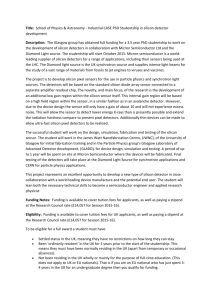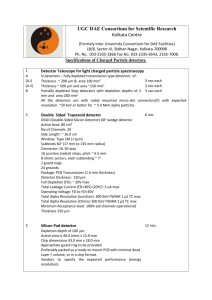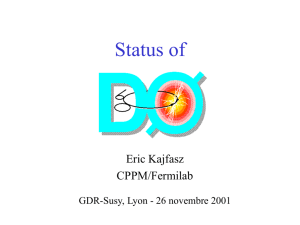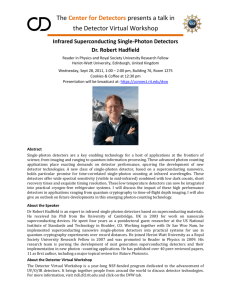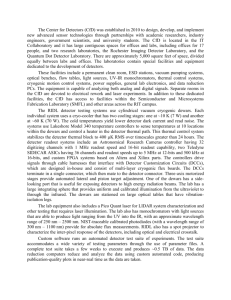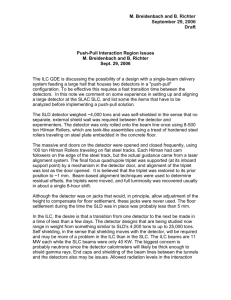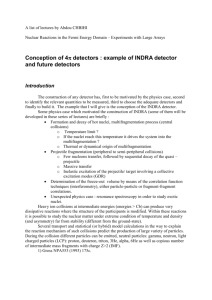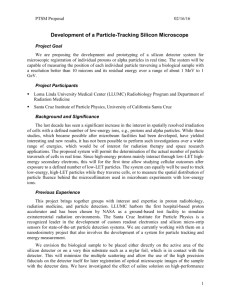ALICE detector questions
advertisement
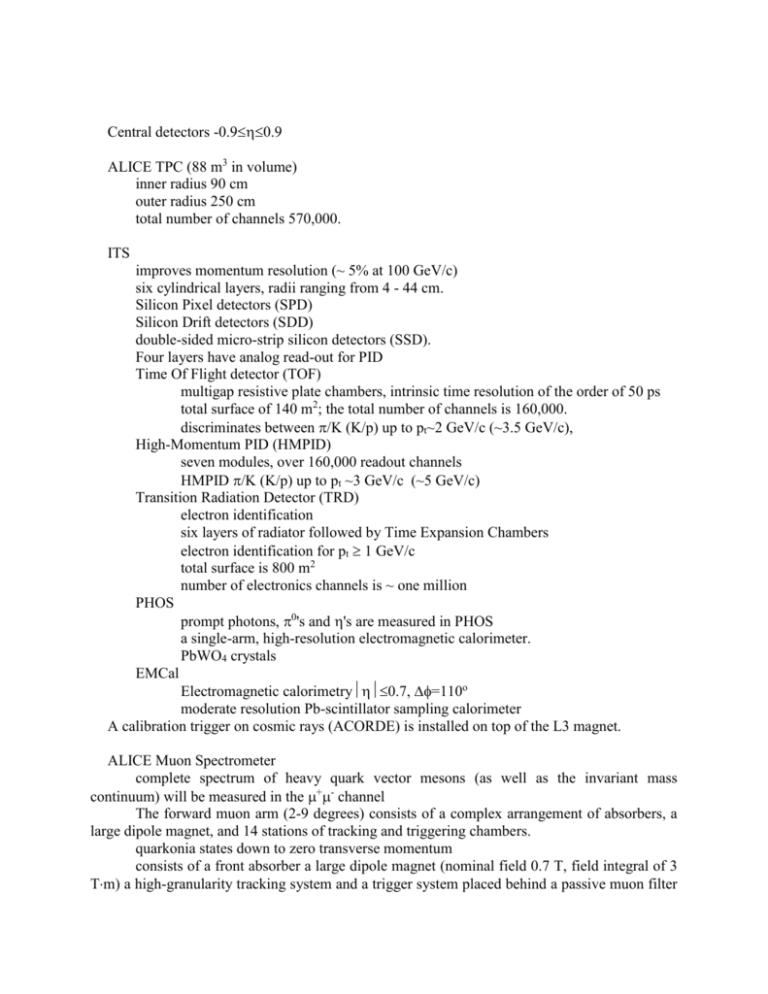
Central detectors -0.90.9 ALICE TPC (88 m3 in volume) inner radius 90 cm outer radius 250 cm total number of channels 570,000. ITS improves momentum resolution (~ 5% at 100 GeV/c) six cylindrical layers, radii ranging from 4 - 44 cm. Silicon Pixel detectors (SPD) Silicon Drift detectors (SDD) double-sided micro-strip silicon detectors (SSD). Four layers have analog read-out for PID Time Of Flight detector (TOF) multigap resistive plate chambers, intrinsic time resolution of the order of 50 ps total surface of 140 m2; the total number of channels is 160,000. discriminates between /K (K/p) up to pt~2 GeV/c (~3.5 GeV/c), High-Momentum PID (HMPID) seven modules, over 160,000 readout channels HMPID /K (K/p) up to pt ~3 GeV/c (~5 GeV/c) Transition Radiation Detector (TRD) electron identification six layers of radiator followed by Time Expansion Chambers electron identification for pt 1 GeV/c total surface is 800 m2 number of electronics channels is ~ one million PHOS prompt photons, 0's and 's are measured in PHOS a single-arm, high-resolution electromagnetic calorimeter. PbWO4 crystals EMCal Electromagnetic calorimetry0.7, =110o moderate resolution Pb-scintillator sampling calorimeter A calibration trigger on cosmic rays (ACORDE) is installed on top of the L3 magnet. ALICE Muon Spectrometer complete spectrum of heavy quark vector mesons (as well as the invariant mass continuum) will be measured in the +- channel The forward muon arm (2-9 degrees) consists of a complex arrangement of absorbers, a large dipole magnet, and 14 stations of tracking and triggering chambers. quarkonia states down to zero transverse momentum consists of a front absorber a large dipole magnet (nominal field 0.7 T, field integral of 3 Tm) a high-granularity tracking system and a trigger system placed behind a passive muon filter wall. The tracking system is based on cathode pad chambers. These are arranged in five stations (each one made of two chambers): two of them are placed before, one inside and two after the dipole and the total number of channels is about one million. Thanks to the high space resolution (better than 100 m in the bending plane) and to the bending power of the magnet, an invariant mass resolution as good as 70 MeV/c2 (100 MeV/c2) is achieved at the J/ () mass, allowing to resolve all the heavy quark vector mesons. The aim of the trigger system is to select events containing a pair of high-pt muons of opposite sign emitted in heavy quarkonia decays. The pt selection is made by means of two trigger stations, each one consisting of two planes of singlegap Resistive Plate Chambers[11,12]. The ALICE setup is completed by several small detector systems at small angle purpose of these detectors is to measure global event characteristics and to provide interaction triggers. Zero Degree Calorimeters [13,14] measure the energy carried by the spectator neutrons and protons placed at about 116 m from the Interaction Point. Multiplicity Detector (PMD) and by the Forward Multiplicity Detector (FMD), respectively. The former is a pre-shower gaseous detector; the latter consists of a mosaic of silicon pads detector surrounding the beam pipe. The task of the T0 Cerenkov counter array is to determine the event time with a precision better than 50 ns, while the one of the V0 scintillator array is to provide a fast measurement of the event multiplicity.



